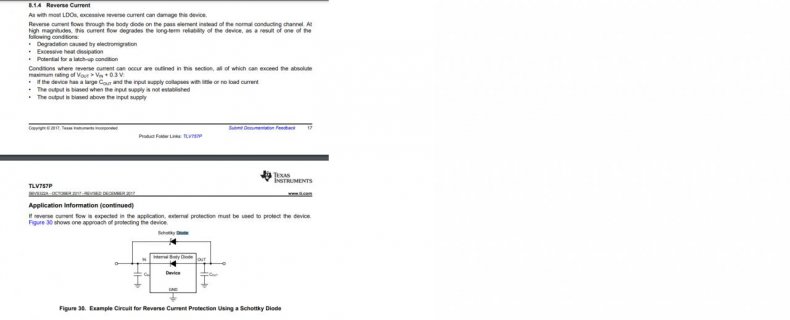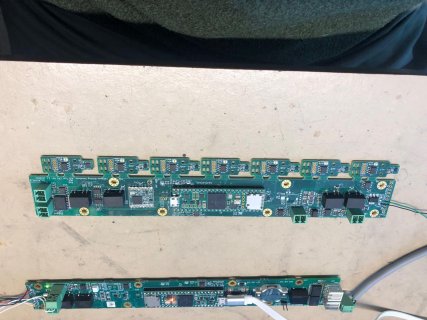A couple of annoying Teensy 4.1 hardware failures recently. I have a theory on what kills them, I think I have the mitigation. But can someone confirm I'm on the right track?
A board with a Teensy 4.1 on it is supplied by USB 5V. The board has many sensor chips that all are supplied by the Teensy 3V3 output. All sensor chips have bypass caps, 10uF each, there are 10+. So I have 100+ uF capacitance on the 3V3 rail.
The problem is that the Teensy 3V3 regulator IC fails occasionally. As in it dies. With the Teensy 5V fuse blowing also sometimes.
The 5V VUSB also powers several DCDC isolators on my board. Those typically draw 100-200 mA collectively. So they are an extra load on the 5V rail, also when I unplug USB because they sit on the Teensy VIN (=VUSB) pins.
My theory is that when I unplug the Teensy USB port, I get excessive reverse current in the 3V3 regulator IC (NCV8186AMN330TAG in my case). So the caps on the 3V3 rail discharging through that LDO regulator, back towards the 5V rail. Datasheet NCV8186AMN330TAG hints that ''Reverse Current - The PMOS pass transistor has an inherent body diode which will be forward biased in the case when VOUT > VIN. Due to this fact in cases, where the extended reverse current condition can be anticipated the device may require additional external protection. ". So I guess an extra diode from 3V3 (anode) back to 5V (cathode) so that the discharge current from the 3V3 rails will no longer be able to kill it. Does that make sense?
Stated differently: is there a spec for the max external capacitance on the Teensy 3V3 pin - when there's also significant load that keeps draining the 5V rail when the 5V supply (from USB) suddenly disappears?
A board with a Teensy 4.1 on it is supplied by USB 5V. The board has many sensor chips that all are supplied by the Teensy 3V3 output. All sensor chips have bypass caps, 10uF each, there are 10+. So I have 100+ uF capacitance on the 3V3 rail.
The problem is that the Teensy 3V3 regulator IC fails occasionally. As in it dies. With the Teensy 5V fuse blowing also sometimes.
The 5V VUSB also powers several DCDC isolators on my board. Those typically draw 100-200 mA collectively. So they are an extra load on the 5V rail, also when I unplug USB because they sit on the Teensy VIN (=VUSB) pins.
My theory is that when I unplug the Teensy USB port, I get excessive reverse current in the 3V3 regulator IC (NCV8186AMN330TAG in my case). So the caps on the 3V3 rail discharging through that LDO regulator, back towards the 5V rail. Datasheet NCV8186AMN330TAG hints that ''Reverse Current - The PMOS pass transistor has an inherent body diode which will be forward biased in the case when VOUT > VIN. Due to this fact in cases, where the extended reverse current condition can be anticipated the device may require additional external protection. ". So I guess an extra diode from 3V3 (anode) back to 5V (cathode) so that the discharge current from the 3V3 rails will no longer be able to kill it. Does that make sense?
Stated differently: is there a spec for the max external capacitance on the Teensy 3V3 pin - when there's also significant load that keeps draining the 5V rail when the 5V supply (from USB) suddenly disappears?



